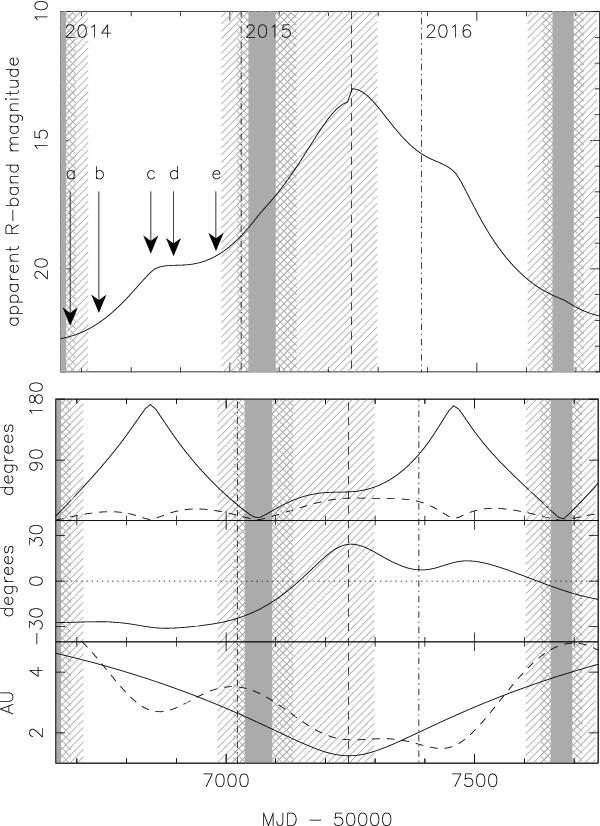Fig. 10

Predicted apparent R-band magnitude of the comet, as measured within an aperture with ρ = 10 000 km, for 2014–2016. This covers the active phase of the Rosetta mission, including any extended mission beyond the end of 2015. Mission milestones in 2014 are marked: (a) Switch on of the spacecraft (January 20th, 2014); (b) Expected beginning of detectable activity, at 4.3 AU (March 2014); (c) The nucleus begins to be resolved by the OSIRIS Narrow Angle Camera on Rosetta (July 2014); (d) Orbit insertion (August 2014, at 3.5 AU); (e) Lander released (November 2014, at 3 AU). The observability of the comet from Earth is shown by hatched, cross-hatched and solid grey areas marking when the solar elongation is less than 50°, 30° and 15°, respectively. Perihelion (in August 2015) is marked by a vertical dashed line. At that time the comet will be 43° from the Sun, as seen from Earth. The lower 3 panels show various geometric parameters that describe the observability of the comet. Upper panel: solar elongation (solid line) and phase angle (dashed line); middle panel: declination; lower panel: heliocentric (solid line) and geocentric (dashed line) distances.
Current usage metrics show cumulative count of Article Views (full-text article views including HTML views, PDF and ePub downloads, according to the available data) and Abstracts Views on Vision4Press platform.
Data correspond to usage on the plateform after 2015. The current usage metrics is available 48-96 hours after online publication and is updated daily on week days.
Initial download of the metrics may take a while.




